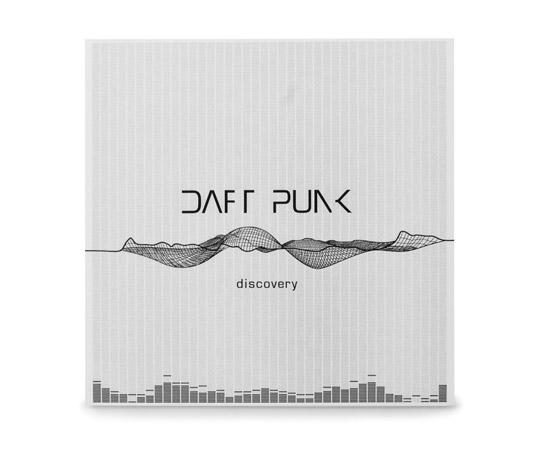Introduction
The human society has always been impacted by numerous phenomena that altered its existence and introduced new distinctive features. The evolution of human thought and the development of technologies resulted in the acquisition of new values and approaches appreciated in society. Besides, the significance of changes has always been conditioned by the scale of innovations and new opportunities they provided.
For these reasons, modern society could be considered the most fast-developing one as many technologies impact its alteration and contribute to the constant reconsideration of traditional approaches. All spheres of human activity go through the period of changes obtaining new features and approaches nowadays. The sphere of art is not an exception. Being one of the integral parts of any community, it goes along with the social medium and tends to reflect the new ideas and visions.
Music, literature, etc. also respond to these processes and acquire new elements which make them more innovative. Yet, the invention of the Interment and its blistering growth poses a significant threat to traditional books and music albums as the online databases provide the possibility to access the needed artwork in a moment. In these regards, there are numerous debates related to the future of books and music albums and the role modern technologies play in the formation of their new image.
Background
As mentioned above, the growth of various technologies promoted significant changes in the structure of modern society. The scale of these alterations is so significant that it is possible to speak about the revolution that introduced several new approaches and visions. The increased importance of technologies combined with the blistering development of the Internet and social media promoted the rise of the network society characterized by certain peculiarities.
First, there is an obvious tendency towards the digitalization of various sources of data to make the process of search and investigation easier. Second, the growth of the importance of social networks and media resulted in the shifts of priority from face-to-face to mediated communication. The combination of these aspects triggered the process of the reconsideration of the approaches towards traditional means of communication and data storage like books, albums, etc. Additionally, the online nature of media has also given rise to a number of concerns related to communication, information exchange, and social relations.
Globalization
One realizes the fact that the rise of the Internet also promoted the development of globalization as people obtained the new tools that provided numerous opportunities for mediated communication. Moreover, the constant improvement of software used to share feelings and emotions on the Internet resulted in the increased importance of the given tool. People all over the world use the Internet and various social networks to communicate and create new relations.
The introduction of the new communication pattern which implies the mediated interchange of thoughts, feelings, emotions, and information conditioned the alterations of data storage as they had to meet the peoples expectations and provide the needed information to people residing in various countries. That is why the process of digitalization has started. It impacted the data related to all spheres of human activity, including art. The need for mediated sources of information conditioned the appearance of digital books, music, etc.
New technologies
Besides, the ubiquitous character of digital devices and media also promoted the appearance of new methods of their usage and the widespread of various technologies that are explored to increase the efficiency and create the new image of a certain phenomenon. For instance, the modern process of the creation of an album, book, CD, and other data storage is closely related to the usage of the latest technologies to emphasize the innovative image and contribute to the growth of its popularity. Furthermore, members of modern society introduce the demand for the new sort of final products which should be characterized by great innovativeness and adherence to the main peculiarities of the mediated society. This product will be more popular and improve the image of its creator. In these regards, there are some new tendencies related to books, albums, their covers, design, and content.
Previous Approaches to Albums vs New Approaches
Yet, numerous authors tend to accept the idea that the above-mentioned alterations of the traditional book and album covers result from the shifts of priorities towards the mediated communication and the further development of the network society. The fact is that the increased significance of digital sources of information and social media introduced certain demands to the image of a final product which differed from the traditional one.
Analyzing the previous approach to the creation of books or albums covers, there are several major concerns. First, designers tried to create a clear and understandable image that could help to realize the content or main motif of a book or album. The scene from the book was depicted on the cover to provide brief information about the most exciting events and attract a customer. Album covers were also created according to this pattern and reflected the main theme.

Yet, the further development of society and sophistication of the technologies used to promote the mediated communication conditioned the significant changes in the demands for books or albums. Despite the tendency to consider them outdated anachronisms, these sources of information continue their existence; however, both books and albums were not able to elude digitalization which impacted their content, image, and covers.
Additionally, their widespread and mass usage conditioned the further development of requirements towards the image. The fact is that the usage of computer technologies provided limitless opportunities for designers who became able to create interactive and abstract covers to promote the growth of the popularity of the final product and its distinctive image. Album covers tend to contain both sounds and visuals to promote a strong effect and attract a person.
Moreover, graphic designers also obtained new tools that helped them to make their works more abstract. New albums became the bright representatives of the modern age and reflected the new tendencies. For instance, the given cover demonstrates the modern approach towards the creation of a certain image of an album. The given abstraction (Picture 1) presents a certain visual image of music as it is presented in numerous music players.
The integration of these elements contributes to the image of frozen music which is embodied with the help of this diagram. Furthermore, there is another example of the modern cover (Picture 2) which has the direct connotations related to the virtual space and network society. It presents the bright abstraction with the connecter. The given image appeals to the digital character of the music and invites a person to join the virtual space and enjoy the sound. The given examples evidence the significant shifts in peoples mentality triggered by further development of the Internet, virtual space, and mediated means of communication.

The introduction of the World Wide Web could not but impact all spheres of human activity as it could be considered one of the most revolutionary inventions. It provided the possibility to share an unlimited amount of information and obtain the data needed for a certain activity. In these regards, people were not able to ignore the given tool and promoted its spread and further evolution. However, this process was also followed by the alteration of the contours and nature of social relations.
The introduction of the mediated means of communication triggered the process of the reconsideration of the traditional approach to the data transfer. The convenience of the new tool conditioned the growth of its popularity and the decline of several approaches that became outdated. Moreover, the evolution of Web also promoted the increase of the tempos of digitalization needed to provide the background for the further spread of social networks.
Yet, digitalization could be defined as the process of the integration of digital technologies into various spheres of human activity. The grounds of this process could be found in the blistering development of technologies and their positive impact on the efficiency. Nevertheless, despite the great practical utility of the given phenomenon, there are also several aspects which are considered the negative ones.
Digitalization introduces significant changes to the traditional practices and data storage, replacing them by the mediated and more innovative approaches. However, it might also have a pernicious effect on society and civilization in general as the value of such basic values as face-to-face communication, intimacy, or literacy becomes less significant. Being the core elements of human society, they. however, resist the pressure and acquire the new forms of existence becoming the part of the new virtual world characterized by digital sources of information.
The impact of the WWW
This process also impacted the literature and its traditional image. There is no use analyzing the classic works as their digitalization is not symptomatic and just proves the existing tendency. However, speaking about modern books and their image, it is vital to admit several important conceptions. First, the decline of the traditional volumes is conditioned by the change of the character of society under the impact of new technologies.
Additionally, the network society has certain demands to the most important sources of information. That is why, it is crucial to be ready to meet these requirements and initiate the change process. In these regards, the modern literature could be easily found in the digital form being presented on various websites, online databases, etc. This shift of priorities could not but impact the image of a book, its content and cover.

Along with album covers, book covers also became more interactive, innovative, and abstract. Furthermore, due to the impact of digitalization and innovative technologies, modern books obtained numerous opportunities to impress readers with their interactivity. However, there designers creativity is not limited by certain frames. Picture 3 demonstrates the modern book cover which is made in the minimalistic style. Yet, it still provides the idea about the content and might attract a reader. Speaking about digital books, one should admit the interactivity of their covers and numerous possibilities for fast and efficient navigation between chapters. In these regards, a book turns into a certain document which might lose its identity and unique image.
Mass digitalization
Furthermore, investigating the peculiarities of the modern network society, it is possible to state the increased demand for the new sort of covers characterized by the great innovativeness and interactive approaches to guarantee the easier and faster understanding of the main idea of the content. Being rather convenient and efficient, these changes, however, pose a certain threat because the further development of the technologies might introduce the new demands to covers.
Additionally, there is the possibility for the continuous decrease of the importance of covers which will be replaced by the interactive content or some other information related to the presented information. Under these conditions, one could admit the pernicious impact of the network society on book and album cover design as the lack of demand will obviously result in the degradation of a certain sphere.
Besides, the rise of social networks and mediated means of communication will also result in the creation of the virtual space deprived of any covers needed to determine the sort of source as the information will be presented in another form. In these regards, the modern covers could be considered the transitional stage between the traditional and future approaches towards the creation of the image of a certain product.
Perspectives
Finally, the revolutionary character of new technologies promotes the significant changes in the mentality of people who become dependent on various devices and software. This fact might have the great pernicious impact on the evolution of society and its major concerns. The overwhelming spread of technologies also improves the comprehending of the future of social networks which will obviously become the main distinctive feature.
Under these conditions, it is crucial to preserve the traditional image of the most important values and promote their reconsideration of the approaches towards practices that might be considered as outdated. The modern network society lacks the understanding of the impact technologies have on it and fail to determine the main priorities. In these regards, the further evolution of music, literature, art, etc will be conditioned by the development of tools needed to create their digital representations. This fact evidences the existing threat and introduces the necessity of further investigations.
Conclusion
Altogether, the rise of social networks and development of technologies gave rise to numerous concerns related to the reconsideration of the traditional approaches used to perform a certain activity. The scale of changes is so significant that this process could be called revolution. Moreover, such phenomena as literature and music were also impacted by the above-mentioned process. The approach towards the cover design changed greatly.
Nowadays, it reflects the alterations of the contours and nature of social relations and provide the information about the main tendencies in the network society. There is a certain threat posed by the further development of technologies as they might force the traditional practices and result in the decline of book and album cover design. With this in mind, it is crucial to trace the latest alterations and monitor the state of the important values to guarantee the preservation of the basic aspects of the traditional human society which serves as the background for the evolution of technologies.
Bibliography
Arns, Inke. Interaction, Participation, Networking: Art and Telecommunication’, Media Art Net. 2004. Web.
Cascio, Jamais. The Rise of the Participatory Panopticon. 2005. Web.
Castells, Manuel. The Rise of the Network Society. Oxford: Blackwell Publishers Ltd., 1996.
Galperin, Anne, “Envisioning Music in the Digital Environment.” in Coverscaping. Discovering Album Aesthetics, edited by Asbjorn Gronstad and Oyvind Vagnes, 57-72, Copenhahen: University of Copenhagen Press, 2010.
Levine, Robert. “How the internet has all but destroyed the market for films, music and newspapers.” The Guardian. 2011. Web.
Lovink, Geert. , Zero Comments: Blogging and Critical Internet Culture. New York: Routledge, 2007.